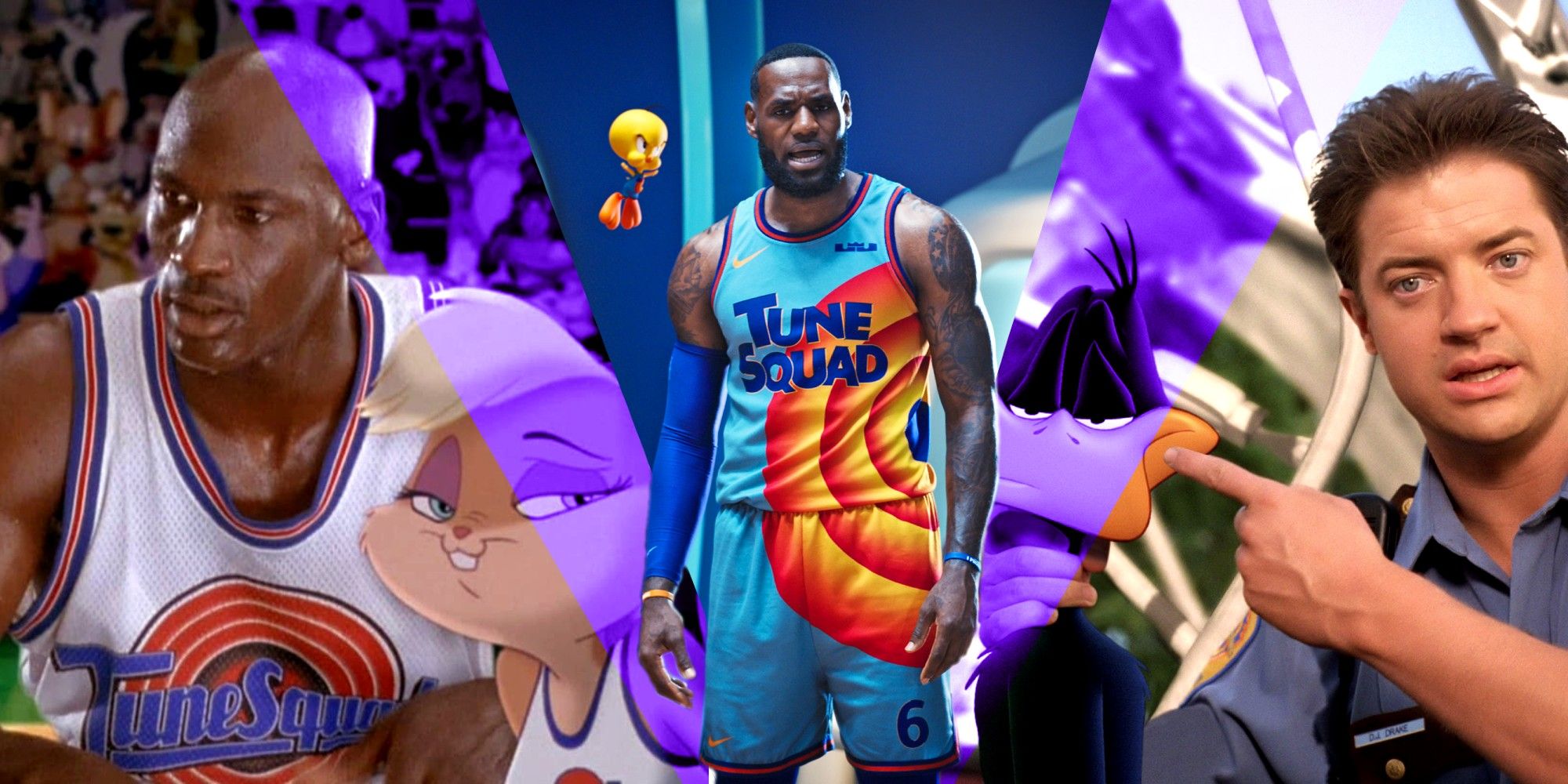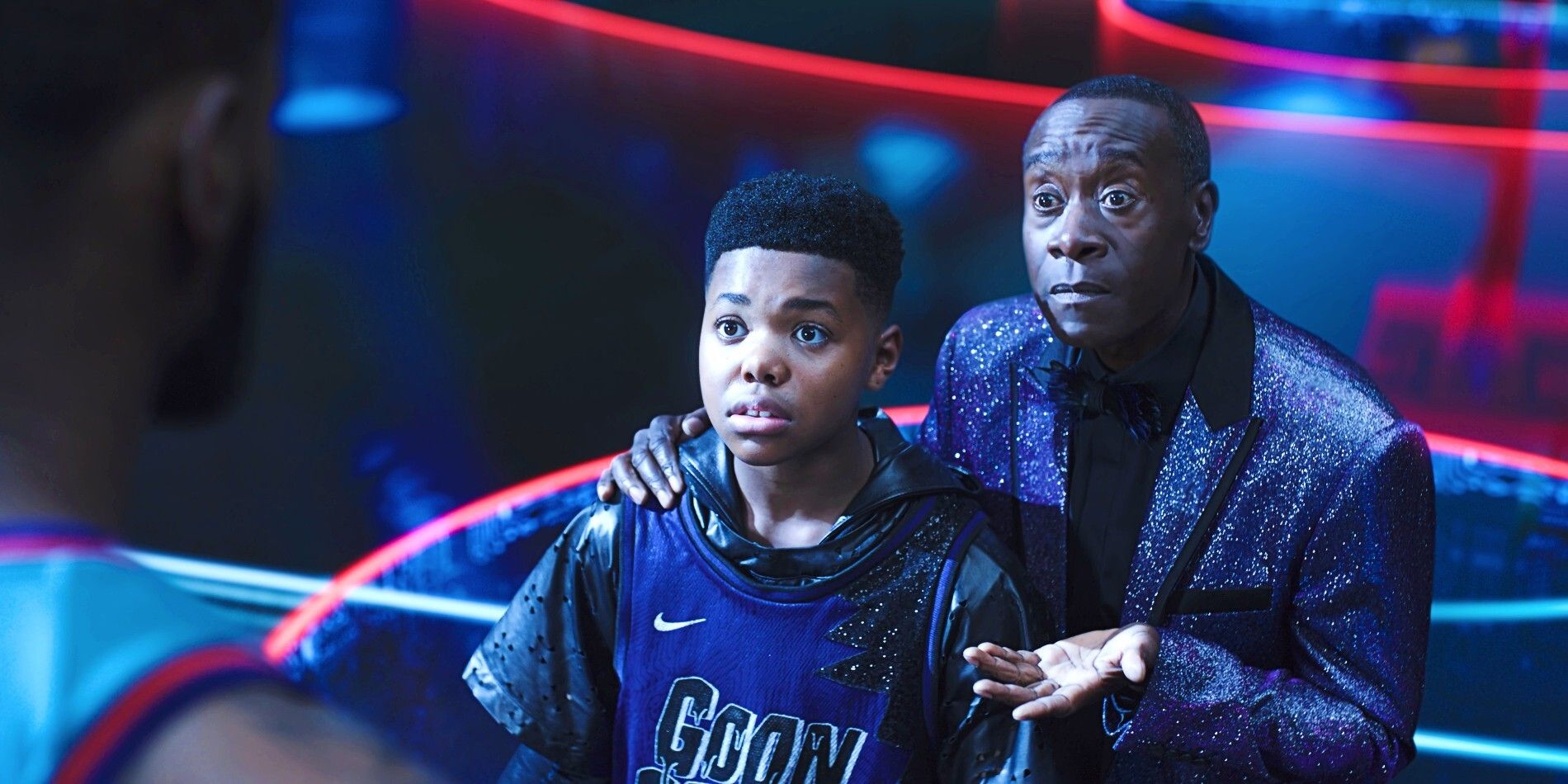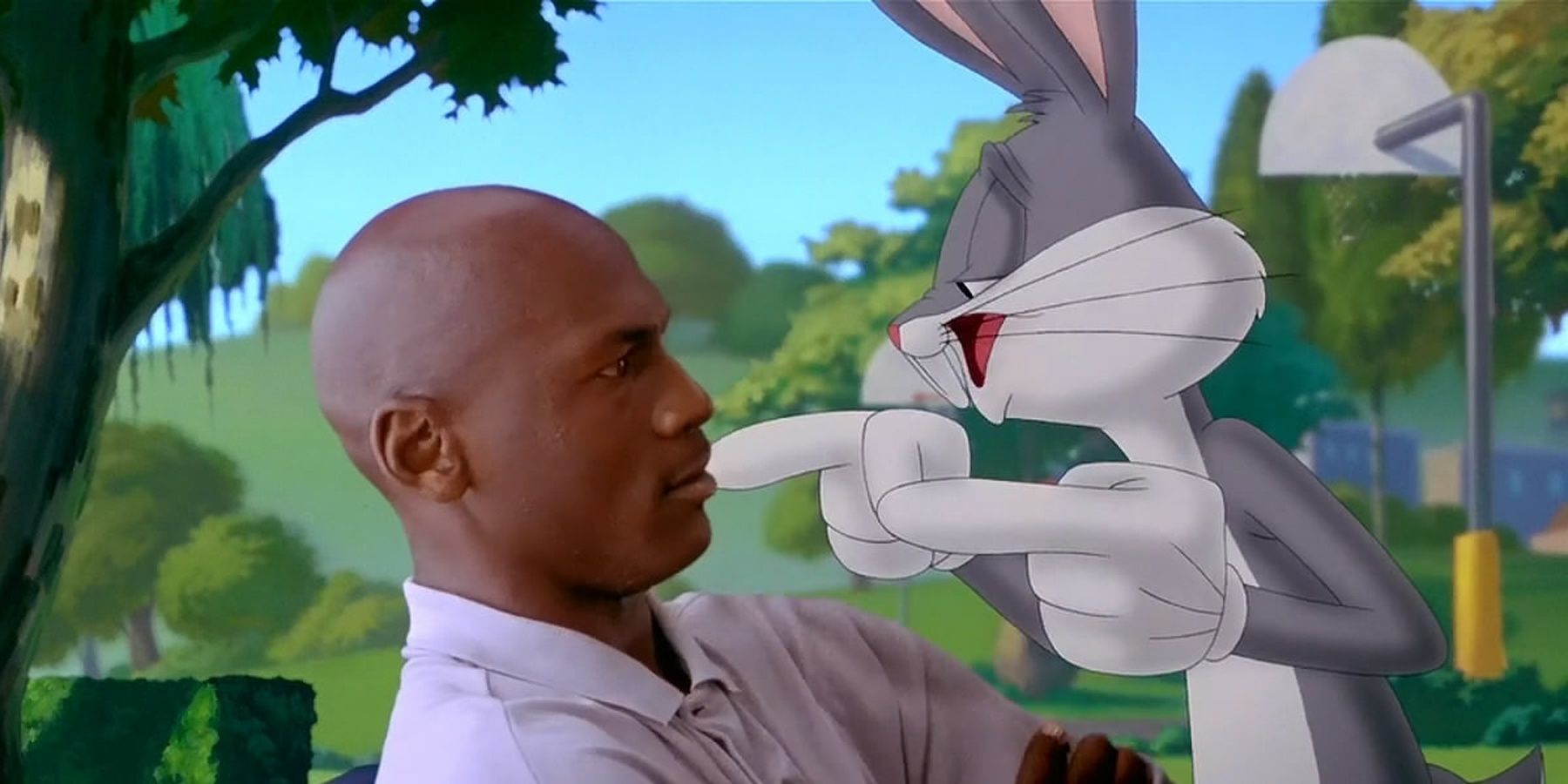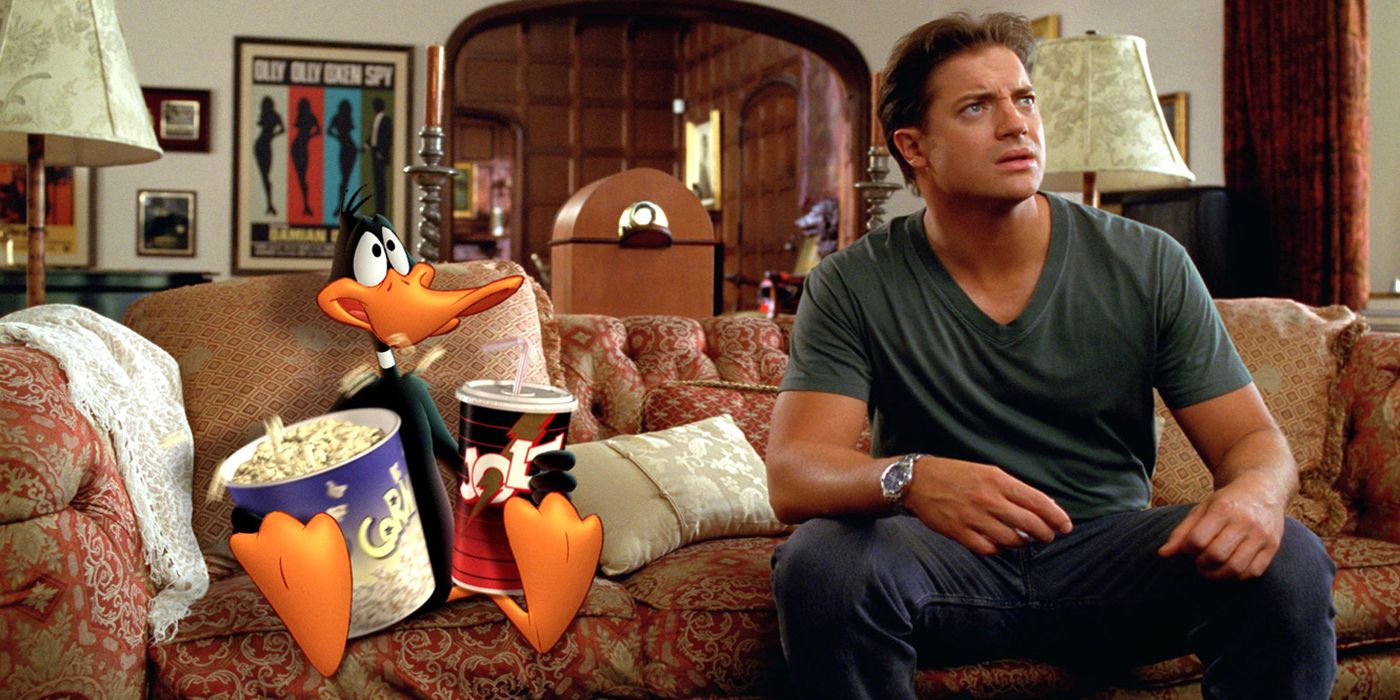The Looney Tunes have had a complicated relationship with the big screen, but how do their films rank from worst to best? The Warner Bros. characters debuted in 1930, appearing in shorts engineered to sell the studio's music. In the mid-30s, directors such as Chuck Jones and Tex Avery would help transform the characters into the iconic figures audiences know and love today. These are the creators of the long-suffering Daffy Duck, the stuttering Porky Pig, the single-minded Elmer Fudd, hungry Sylvester, adorable Tweety Bird, and of course the smart-aleck ringleader of them all, Bugs Bunny.
As many Looney Tunes shorts as there have been since the 1930s, somehow the characters didn't make the transition to the big screen until 1996's Space Jam. A box office smash and cross-media sensation, that film put the Tunes back on the map and instantly raised interest in what their next film appearance might entail. Would it be Spy Jam with Jackie Chan? Race Jam with Jeff Gordon? Skate Jam with Tony Hawk? All of this development was parlayed into 2003's Looney Tunes: Back in Action, which simultaneously saw director Joe Dante steering the characters back to their Chuck Jones-esque roots and also delivering a flop that would kill the big screen prospects of the characters for nearly two decades.
2021 has brought the long-awaited Space Jam: A New Legacy, which sees LeBron James filling the shoes of Michael Jordan and brings the Tunes back for more basketball and branding. It's safe to say now that its' been released that these iconic characters have never been given total justice on the big screen. The true Looney Tunes cinematic masterpiece is yet to be made, but nonetheless, here are their films thus far, ranked from worst to best.
3. Space Jam: A New Legacy (2021)
The crass commercialism of Space Jam: A New Legacy isn't exactly a new thing. One could make the argument that our current obsession with nostalgia-ridden cinematic universes, where IP bashes up against IP until the end of time, began back in 1996 with the release of the original Space Jam. However, while that film was a shrewd bit of marketing that mashed up the phenomenon of Michael Jordan with an effort to revitalize the Looney Tunes for '90s kids, this long-delayed sequel takes brand management to a hitherto unseen level of ridiculousness.
The story concerns LeBron James having to team up with the Looney Tunes to save his son from a rogue artificial intelligence program crudely named Al G. Rhythm and played by Don Cheadle. Said character resides in the Warner Bros. Serververse, an interconnected galaxy of planets that serves as both a setting for much of the film and a not-so-gentle reminder of all the properties the studio has in its library. James zooms past the Wicked Witch of the West, through Game of Thrones Land, and past Harry Potter World (he's a Hufflepuff) on his journey to meet Bugs Bunny. Later on, the duo must rescue the rest of the Tunes, who have been animated into several sequences from famous movies. "Play it again, Sam," says Ingrid Bergman to a certain Yosemite man; the Roadrunner and Wile E. Coyote find themselves in Mad Max: Fury Road; and, in a gag that was dated back when Shrek used it in 2001, Granny shows off some Matrix-style bullet-time kung fu. All of these references serve only to remind the viewer of the better movies they could be watching, which is also perhaps the point.
Particularly in light of the Warner Bros. and HBO Max deal, it's hard to see this film as anything other than an extended commercial for that service's library, its halfhearted story about a son trying to prove himself to his dad drowned out by a loud and shameless plea to viewers to see the studio as major an IP powerhouse as Disney. Again, this type of cynical branding is part and parcel with the Space Jam title, but at least the first one didn't have an appearance by "The Notorious P.I.G."
2. Space Jam (1996)
A fact that has gone relatively unremarked upon in the 25 years since Space Jam's release is that the Looney Tunes are all but wasted in it. The zany, anarchic antics and boffo personalities that radiate from the old cartoons are nowhere to be found, playing second fiddle to an extended advertisement for the shiny, superstar brand that was Michael Jordan. In 1996, nobody was bigger than His Airness, and the shrewd marketing move of teaming him up with the Looney Tunes instantly appealed to every '90s kid, from sports fanatics to Saturday morning cartoon enthusiasts. Space Jam was a phenomenon, and while it may be spoilsporty to say that the film doesn't play nearly as well when the rose-colored glasses of a 10-year-old in '96 are removed, it's also true.
The film's script sags under the weight of having to balance all its disparate brands, with extreme priority given to the rehabilitation of the Michael Jordan legend (along with product placement for everything from Nike to McDonald's). Jordan himself retired from basketball in his prime to play minor league baseball, and while his return to the Chicago Bulls was already in full swing, he was in need of some marketing assistance to cement his legacy as the greatest player of all time. Space Jam served that function, and while childhood fans mostly remember it for the 25-minute basketball game that serves as its climax, much of the film would be better described as a saccharine, overly varnished biopic of one of the most aggressively and effectively marketed athletes to ever live. That's not to say Jordan doesn't acquit himself reasonably well in his performance, nor that Space Jam, with its iconic soundtrack and zeitgeisty concept, isn't just about as pure a time capsule of '90s kid culture as one could ask for. It's just that somewhere between the half-hour setup of Jordan as a baseball-loving family man and the coda of his triumphant return to the Chicago Bulls, the Looney Tunes get lost in the shuffle.
1. Looney Tunes: Back in Action (2003)
Originally developed as a sequel to Space Jam, this 2003 flop killed the big screen prospects of the Looney Tunes for nearly two decades. Somehow, though, it's simultaneously the best feature-length film they've appeared in and the only one to place them rightfully at the center of the frame. It certainly helps that it's directed by Joe Dante, who brought the zany grab-bag style of Warner Bros. cartoons to Gremlins and, to an even greater degree, its cult classic, Key and Peele-spoofed sequel. Dante seems positively giddy at the prospect of bringing these characters to the big screen, and the film is refreshingly overflowing with the smart-aleck silliness of Bugs Bunny and company. Even the interaction between the live-action and animation is handled more seamlessly than anything in either Space Jam, with several of the more complicated setups bringing to mind the inventive ingenuity of Robert Zemeckis' Who Framed Roger Rabbit?.
The plot, such as it is, concerns Bugs Bunny and Daffy Duck as they team up with an aspiring stuntman (played by Brendan Fraser) and a studio executive (played by Jenna Elfman) to rescue the stuntman's father (Timothy Dalton) and find the "Blue Monkey" diamond before it falls into the hands of the evil Mr. Chairman (Steve Martin). The spy genre fits the Tunes more aptly than the basketball mashup of Space Jam ever has, but this is all mostly used as a clothesline for Dante and screenwriter Larry Doyle to hang as many gags as possible. The best and most inspired of these involves Elmer Fudd chasing Bugs and Daffy through the paintings of the Louvre; as the trio makes their way through Salvador Dali's "The Persistence of Memory," Elmer's gun begins to melt like the clocks on the canvas, and soon enough he's dissolved into a bunch of pointillistic dots in George Seurat's "A Sunday on La Grande Jatte." Such artistic swings are far from the crass cash-grab of Space Jam, and according to Dante, Warner Bros. was consistently angling for a more hip sensibility. It's true Back in Action is no masterpiece; its Saturday morning sensibility can't quite sustain for 90 minutes, but considering the restrictions placed on the director it's amazing he was able to capture so much of the inspired anarchy of the titular Looney Tunes.




